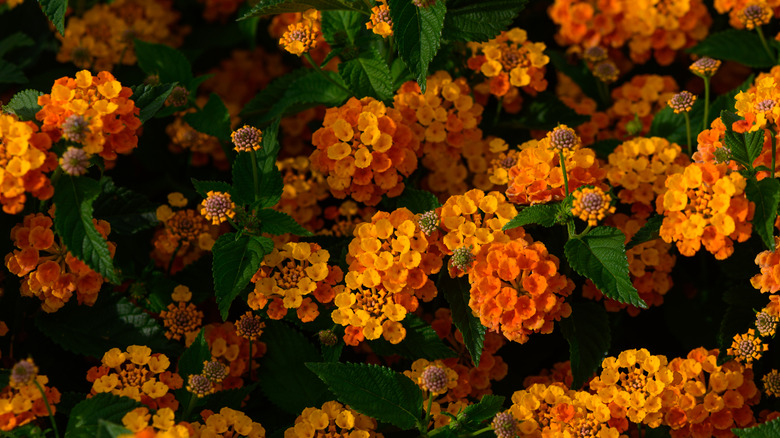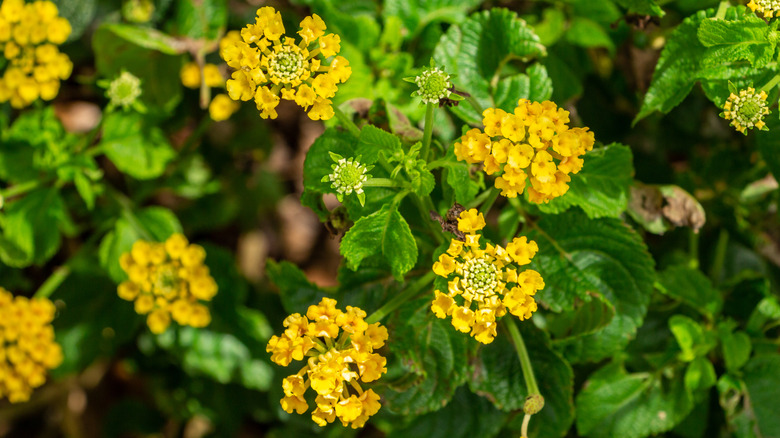Keep Your Lantana Plants Blooming All Summer Long With One Simple Gardening Tip
Lantana plants are a great way to bring gorgeous pops of color to your yard, from bright yellow to red, as well as attract pretty hummingbirds and butterflies. These perennials are tolerant to heat and drought and require minimal maintenance, making them suitable for even the most beginner gardeners. That being said, there are a few simple things to keep in mind to successfully grow and take care of lantana plants. Lantanas like well drained soil and full sun and thrive in USDA hardiness zones 9 to 11. Although they can be planted in other regions of the country, they will act as annuals rather than perennials in climates that experience cold winters.
Wherever you live, you can make the most of your plants and keep them blooming all summer long with a simple hack: summertime pruning. Pruning is essential to improve plant health but also to encourage new branch and flower growth. While the ideal timing varies by variety, lantanas are one of 10 plants you should prune in July to keep them happy and healthy. Begin by deadheading wilting blossoms as they happen and, if you notice excessive growth, prune the plant to keep its size in check, cutting off as much as a third of its width and height. Mid- to end July is a good time to do this, but it's also wise to regularly shear the tips of its branches throughout summer to encourage more blooming. Once pruned, simply add fertilizer and water and watch the flowers sprout again.
Some things to consider when growing lantanas
Once summer begins to change into fall, hit pause on any major pruning in order to keep lantana's cold hardiness at a maximum. Instead, wait until early spring at which point you can snip off any dead branches, as well as cut the plant considerably down to just 6 to 12 inches from the ground. This will encourage new branches (and blooms) to grow.
Before filling your garden with lantana, though, there are a few things to think about. Keep in mind that lantana is considered to be an invasive species in the southeastern U.S. and Hawaii. These invasive plants shouldn't be grown in states like Florida, as they can thwart local plants and cause real damage to the local ecosystem. Luckily, if you love the look of lantanas, there are nurseries that specialize in selling native varieties of various plants, including lantanas. Florida, for example, has two native varieties: the white Lantana involucrata and yellow Lantana depressa. Alternatively, there is also a growing number of sterile varieties available. These lantanas have been engineered to not produce seeds and pollen, therefore stopping them from spreading and becoming invasive.
What's more, most parts of a lantana are considered toxic when ingested, so they shouldn't be planted around children or pets. However, growers are experimenting with creating new varieties that don't produce any berries, thus lowering the danger of accidental poisoning, although their leaves and flowers will continue to contain toxins.

